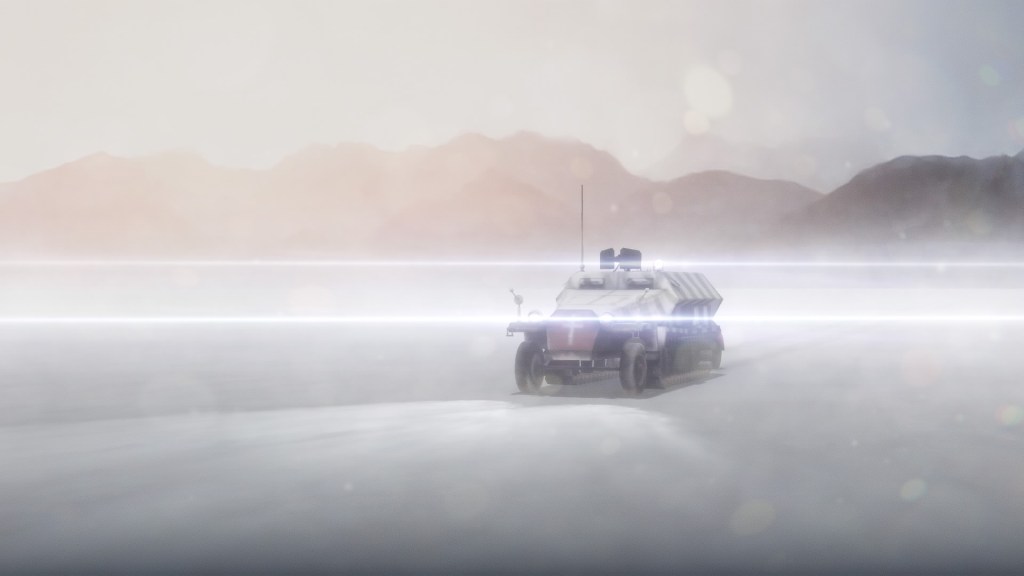There are certain things that can make a strategy game good. One is interesting maps filled with different approaches, tactical elements that can provide boons or penalties, and interesting ambiance. Engaging units that really make you think about how you can customize them or best use them in various situations is another good one. Especially if you can pick and choose squad members. A well-thought out story with thoughtful lore and motivations for fighting can be great. Also, you can’t neglect great AI that pushes you to be better.
Unfortunately, 1971 Project Helios doesn’t have any of those things. Its maps aren’t interesting or challenging. I never cared about any of the units or their advancement options. The story is barely there and there’s no real motivation to search for the clippings that add more “lore.” Also, the AI often boils down to either hitting the enemy closest to the foe or the ally who has the lowest health.
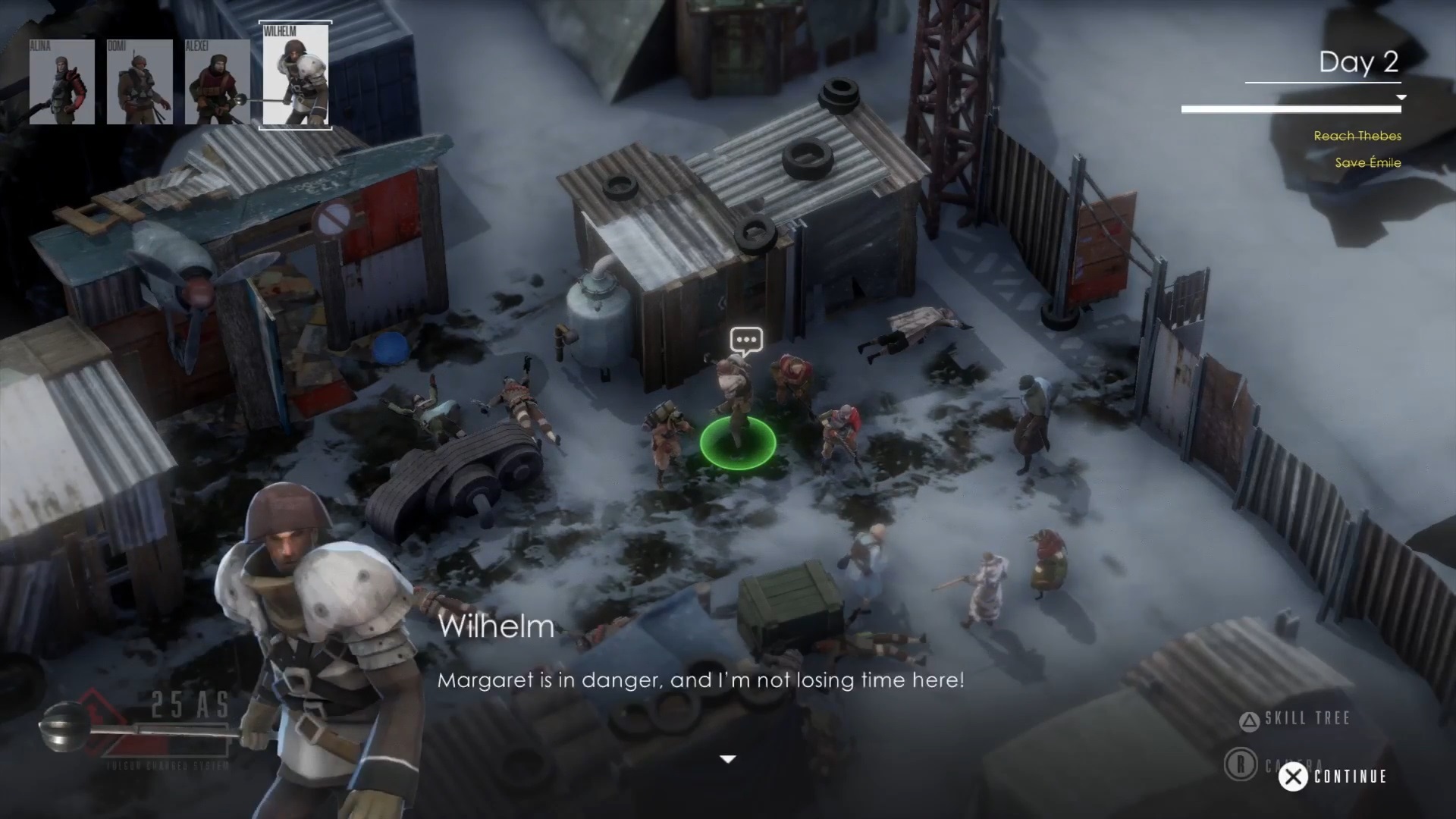
1971 Project Helios Review – Search and Rescue
1971 Project Helios offers an alternate approach to history, set in a world where the whole world is frozen. One scientist, Dr. Margaret Blythe, has been conducting research on something called Project Helios that could help change the world for the better. Except, as you would expect from someone with such valuable information, everyone wants her. She was kidnapped by one group, a scavenger named Butch.
Our initial “heroes,” Emile and Hanna, were going to take her to get enough fulgor (currency) to support them and Emile’s family. Except she was already gone when they got there, Butch figured out what they were up to, and they have to work with his man and another person who knows where the doctor might have been taken, Ame, to find her. Meanwhile, the people who were supposed to be watching and protecting Dr. Blythe in the first place, Wilhelm and his soldiers Alina, Alexei, and Domi, are trying to find her. So, we have a group of people who normally would probably kill each other working together to find the kidnapped scientist for reasons.
I suppose I realized 1971 Project Helios’ story was doomed once I reached a moment where I was probably supposed to care. Emile and Hanna are going with Renzo, big bad scavenger man Butch’s agent, to find this woman named Ame who knows where this place called Delphos 3. The trio gets to the village and meets Edith and Ame. But then, someone comes up and tells Edith that Emile and Hanna killed someone named Yana when they were heading to that scavenger truck holding the scientist Butch had. Edith is enraged and grief-stricken and… it was meaningless. It was like I had called up an aunt who was telling me about the drama-filled lives of distant relatives and sure, it is probably supposed to matter to me, but none of it does.
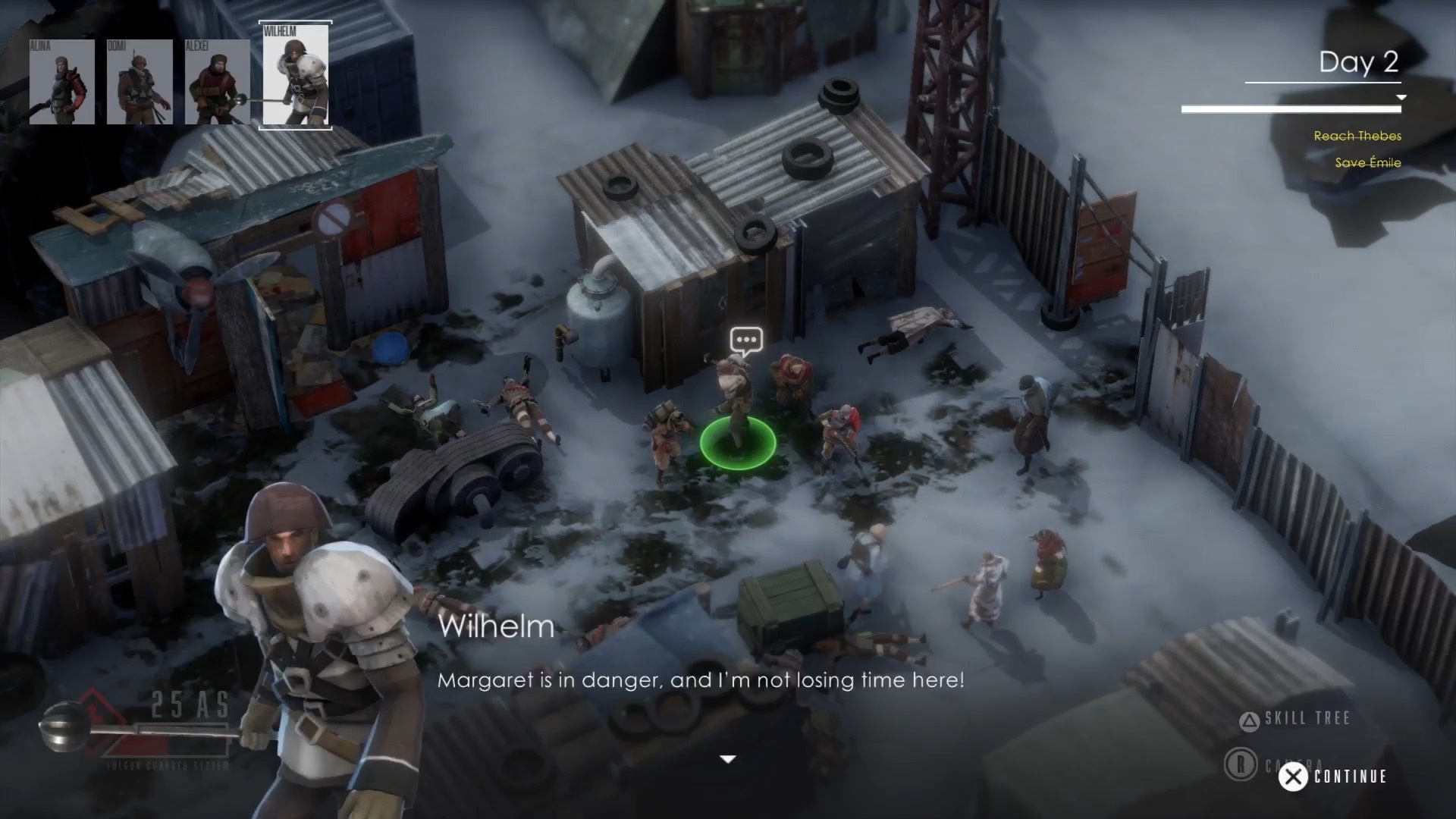
1971 Project Helios Review – Waylaid Tactics
As far as the tactics go, 1971 Project Helios isn’t great. There are a lot of ideas where maybe you can see what RecoTechnology S.L. was going for, but nothing ever pulls together cohesively in an enjoyable way. For example, each day has you controlling one party member as you run around a map from battle to battle. Except the maps aren’t interesting, don’t look great, and never have any context clues to hint at where you might find things like bits of lore. (Fulgor is typically easily noticeable, at least, and some equipment you need for skills will drop after some fights.) There’s no incentive to explore.
When you reach a battle, you automatically hop into a fight on an extremely small grid. Odds are there will be a few pieces of cover that provide 50% protection from enemy attacks, and most of it will already be occupied by the enemies that were waiting for you. It is very likely that the space is so small, you’ll have at least one character spawning next to a foe. It is also probably outdoors, which means you have to be aware if its cold enough for frostbite to set in. Frostbite gradually freezes your health, which can cause a character to completely freeze. Which in turn requires you to spend valuable fulgor to reanimate them.
I get what the team was probably going for. The close quarters and threat of death due to cold is designed to force you to play aggressively, maybe even recklessly. It even seems like the Renzo character, with his ability to push foes, and the Overwatch skill many ranged characters have, which let them react on an enemy’s turn to a foe’s movement, are designed to trigger Into the Breach style chain reactions. It also wants you to look for 100% hit shots. But it really comes down to picking people off, sometimes without moving your own characters, because there’s no need to move anyway and you know if you put someone tank-y nearby, like Renzo or Wilhelm, there’s a good chance the AI will go for them.
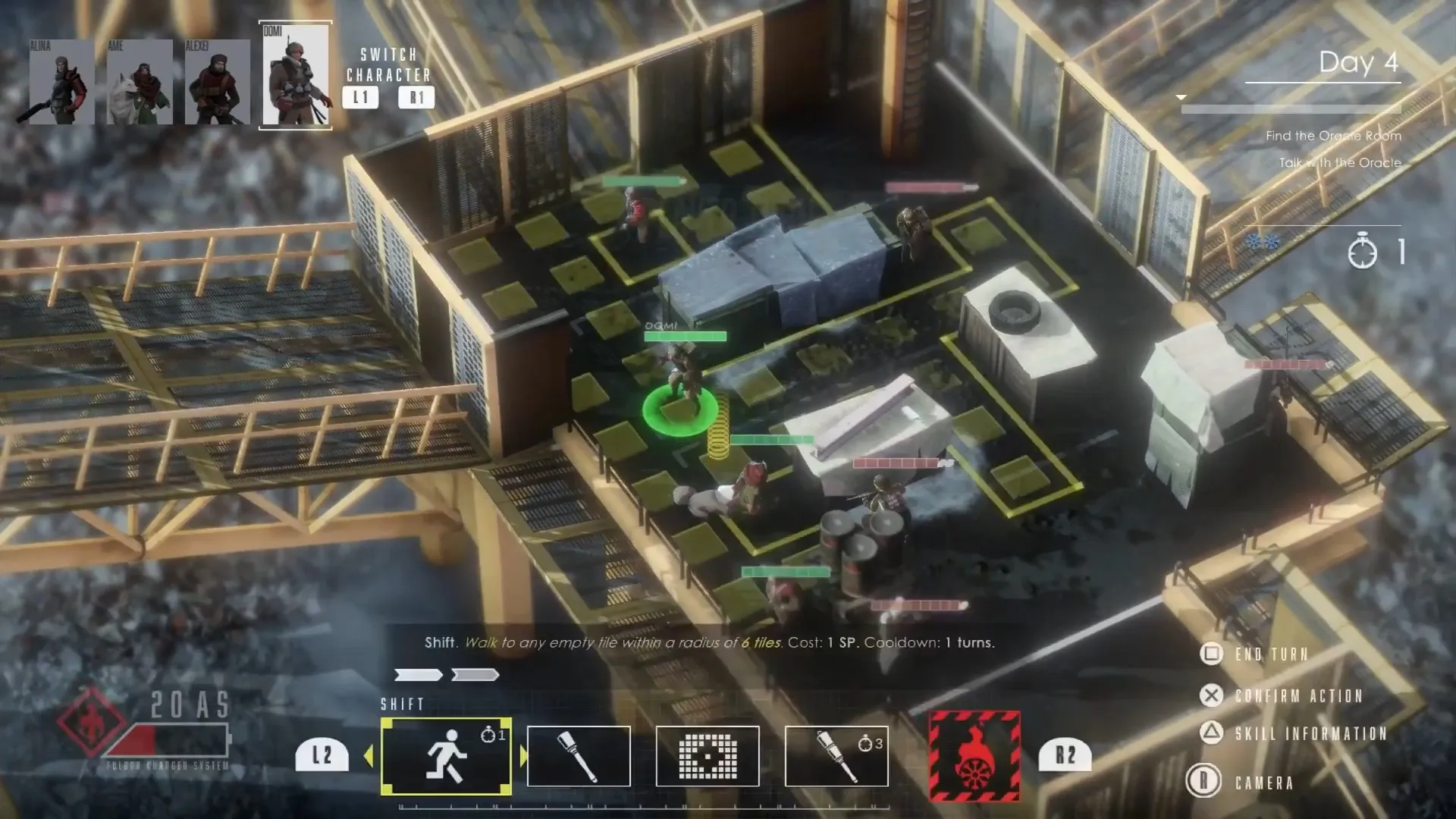
Well, unless one person is prone. The AI tends to be predictable. Is one of your characters really close to them? Yeah, that’s a likely candidate. Unless there is also someone within range who has taken even the slightest amount of damage. Then, everyone zeroes in on that person. Which can be frustrating, since before you get the reanimate ability, one person dying can mean restarting an entire battle and you initially don’t have anyone capable of healing.
Ame eventually gets that skill, by the way. That is, if you have the amplifier headset and make room to equip it in one of the two optional skill slots. After making enough progress in the story, you can play around with character abilities. Since everyone has to have Shift, the ability to move, in the first slot and their basic attack in the second, you essentially only have two slots where you determine what abilities could go there. Which doesn’t really lend itself well to character customization. Do I have a character with a Cover skill to buff their armor and act as a lure? Do I have someone who can perform a headshot and maybe kill some enemies in a single turn? Okay. I’m fine. Who cares about other upgrades?
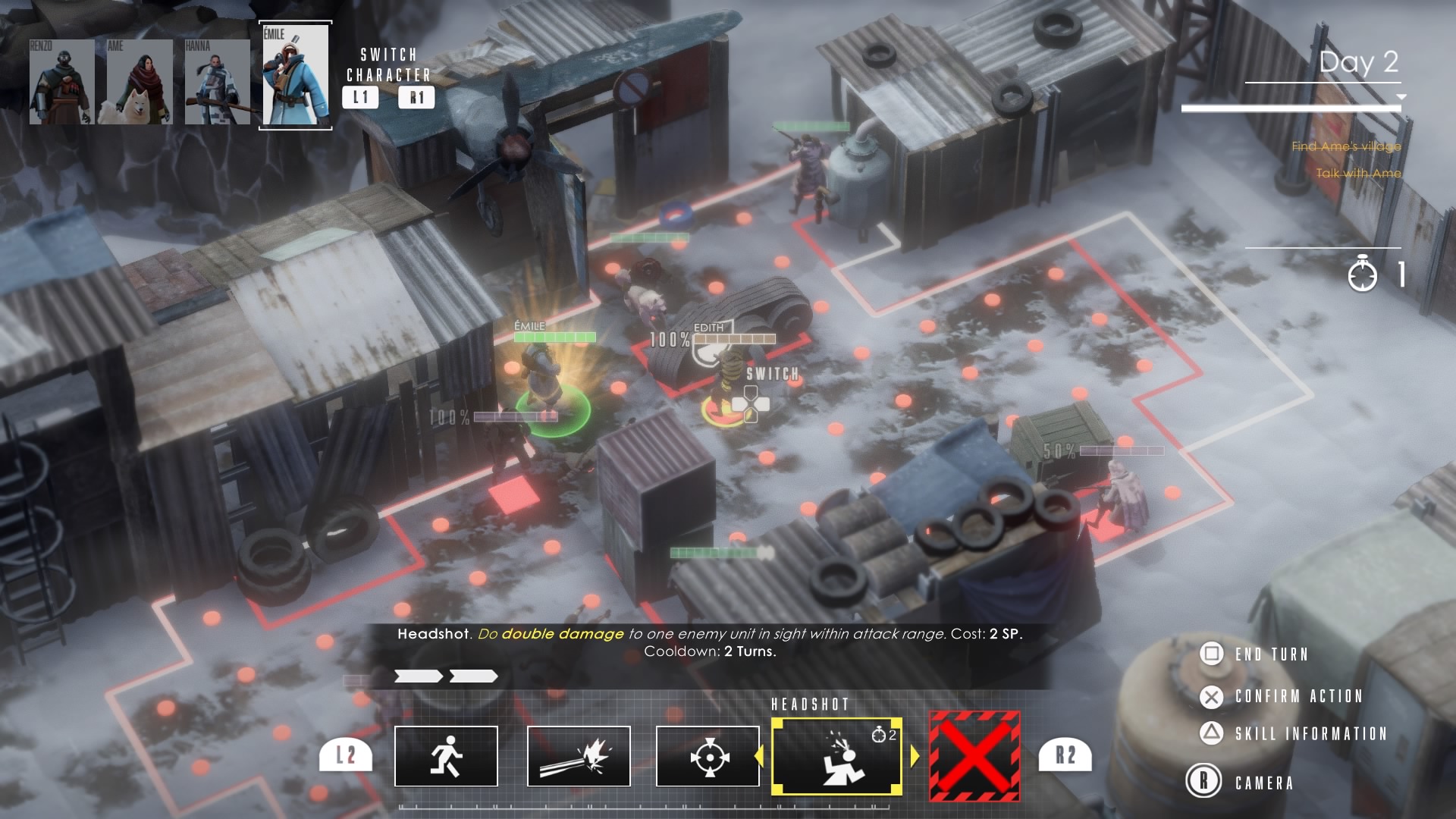
1971 Project Helios Review – A World Where Nothing Stands Out
Maybe this all would have been easier to deal with if 1971 Project Helios at least looked good, but the game doesn’t even have that going for it. The character portraits, which you only see when the characters very rarely talk, are the best part. Even those are nondescript and look like any sorts of soldier-types bundled up for a cold weather excursion. Environments aren’t terribly detailed, so even if you do visit “unique” places like outdoor spaces, lab bunkers, villages, special or a dungeon, they’re all very bland with no visual accents that encourage you to linger. The music isn’t great. There is nothing noteworthy or memorable about it.
Even the options are bare bones. If you go look, you get two audio options. Which okay, sure. Fine. This is an indie game and we don’t necessarily expect a lot. But when you have a strategy game, it would be nice if there were options to manually save when you go to the pause screen or maybe opt to begin at a specific chapter, since the story is divided up by “days” and groups. But no. The in-combat menu only lets you choose to continue, restart combat, (usually) return to camp, go back to those two audio options in settings, or head to the main menu. At least if you decide to stop in the middle of a fight or group’s segment, the autosave has you covered from the beginning of the last battle you reached.
There are a lot of great strategy games on the PlayStation 4. Maybe, if that weren’t the case, it would be easier to forgive 1971 Project Helios being a bland adventure with largely forgettable characters engaging in claustrophobic encounters against enemies that all sort of blend together. I mean, it works well enough on the system. The loading screens are a little long for something so basic, but that isn’t an egregious offense. You can even see how sometimes it is trying to push people to be aggressive. Unfortunately, I found it completely unappealing in every way, which isn’t great when it was surrounded by better games every time I turned on my system.
1971 Project Helios PS4 review code provided by publisher. Version 1.00 reviewed on a standard PlayStation 4. For more information on scoring please see our Review Policy.
-
It forces you to play aggressively, due to so many close quarters maps.
-
Each encounter with enemies has good pacing and is relatively fast.
-
The story is incredibly bland.
-
There's no reason to care about any of the characters.
-
While each person has a skill tree, you're reasonably set once you get certain characters set up. (I never really saw a need to change Hanna's skills for example.)
-
The maps aren't interesting and all tend to be small and straightforward.
-
The character models, environments, and music are tend to be rather generic.
-
It lacks options like the ability to save in the middle of a fight, forcing you to rely on autosaves.
